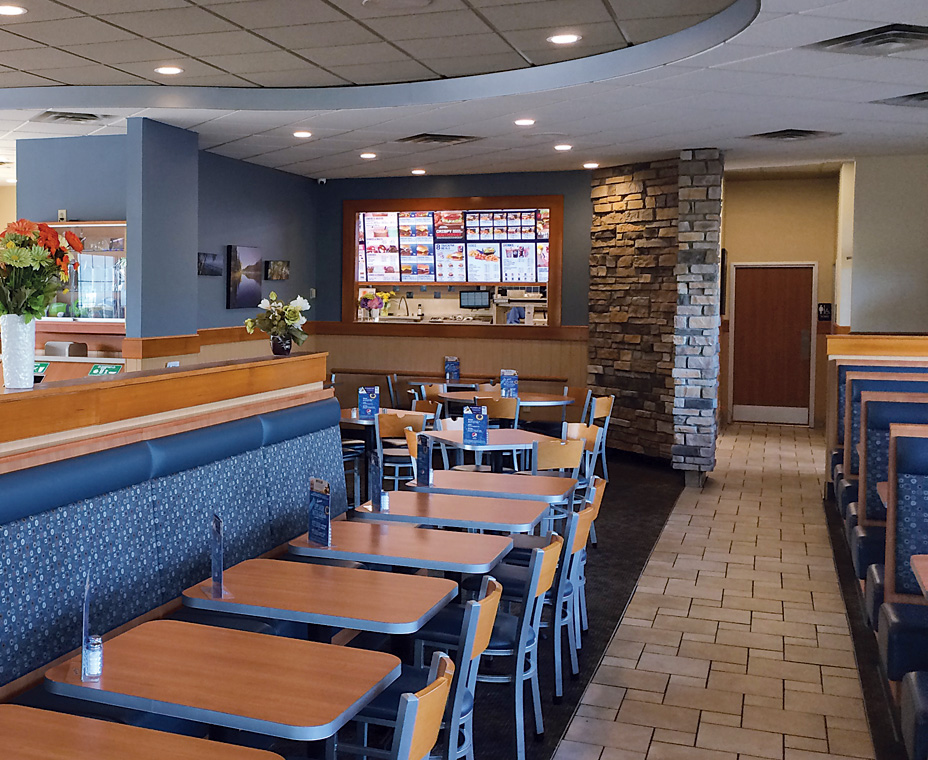It’s no secret that America as a culture prizes cleanliness as an inherent, cultural virtue. This near obsession goes far beyond the stacks of deodorants, perfumes, shampoos, and soaps that line bathrooms walls. In the marketplace, retailers—and especially restaurants—can easily lose hundreds of potential customers and even go out of business due to a bad reputation for dirty or unkempt facilities.
Market Force Information conducted a survey of nearly 10,500 people in January 2016 in which people ranked fast-casual and quick-service brands in various categories. For chicken concepts, Chick-fil-A dominated in cleanliness with a 74 percent satisfaction rating, while KFC and Church’s Chicken earned low scores of 36 percent. For Mexican restaurants, Rubio’s Coastal Grill tied with Chipotle for cleanliness at 54 percent, while also notching wins in the categories of “friendly service” and “atmosphere.” Taco Cabana and Taco Bell were last in the cleanliness category, at 37 percent.
Rubio’s founder Ralph Rubio says cleanliness is part of the foundation of Rubio’s food culture.
“We train Rubio’s team members on appropriate protocol from the start of team-member onboarding. Ensuring that our salsa bar and table surfaces are clean, trash is taken out, and restrooms are tidy are all examples of measures we take to create a welcoming environment,” Rubio says.
A study commissioned by Cintas Corporation of almost 2,100 U.S. adults found that 93 percent of those surveyed would not return to a store if they experienced issues with a retail store’s facilities. Those surveyed listed the following as cleanliness issues that mattered most: bad odors, dirty restrooms and other dirty surfaces, and miscellaneous areas like tidy entryways.
While consumers expect cleanliness, there are no guarantees that all locations are consistently tidy across a brand. Online feedback systems like Yelp can be a tool for the consumer to research a particular store, but it can be hard to gauge how fair and uniform those evaluations are. Local health department records are another way to check on an individual restaurant’s performance, and can be an eye-opening, if limited, window into a restaurant’s failure to keep clean premises.
According to the National Pest Management Association (NPMA), the presence of pests in a restaurant—like a rodent infestation—could be a sign that there is a potential threat to food safety.
The NPMA recommends that restaurant owners and mangers work with licensed pest-control professionals consistently to establish what’s called an “integrated pest management plan.”
There is no national database for health inspection reports of restaurants since they are often conducted at the municipal level. In the absence of that, opinion-based studies are important to get consumer consensus on the cleanliness of facilities.
Outside of the obvious reason of not wanting to gross out customers, clean facilities are a restaurant’s best first defense against food-borne illness. Headlines about restaurant-related outbreaks or diseases can haunt a brand for months, if not years—just look at Chipotle, which has struggled to bounce back after E. coli and norovirus outbreaks in late 2015.
Don Schaffner, distinguished professor and extension specialist in food science at Rutgers University, says it’s not always clear where bacteria are getting into food.
“We do know that contamination can arise at the farm, during preparation, or at the restaurant itself,” Schaffner says. “Unfortunately, the nature of foodborne disease and the way that we track it and report it are such that we don’t know the answer definitively.”
A July 2014 article on Consumer Reports’ website noted the results of a survey asking its readers their opinion on the cleanliness of dining rooms in restaurants. The highest-rated businesses for cleanliness in that survey included Chick-fil-A, Culver’s, Panera Bread, and Schlotzsky’s.
Joe Feminis, director of operations for Culver’s south central region, says clean facilities are part of the brand DNA.
Culver’s closely monitors its social media along with more traditional channels (comment cards, its website feedback page, etc.) to quickly catch issues with dirty facilities.
“The majority of these comments reflect the guests’ appreciation of sparkling facilities, clean restrooms, and professionally attired team members,” Feminis says.
The design and aesthetics of restaurants’ facilities are other areas that can bolster customers’ perceptions of how clean they are.
Firehouse Subs was another business that took top honors for cleanliness in the survey. Firehouse CEO Don Fox says the design of the stores emphasizes the store’s rigorous cleaning protocols.
“Our success in terms of cleanliness rests on a combination of two factors: operational discipline and facility design,” Fox says. “Our operational mantra is simple: ‘customer first, dining room second, everything else last.’ And our facility design is centered around bright lighting and decor elements, such as white ceramic tile, which, when well maintained, reflect a vibrant, appealing atmosphere.”
Rubio’s has remodeled nearly 70 restaurants in the past two years to reflect the addition of “Coastal Grill” to the chain’s name by improving the ambiance.
Rubio says additions of hues of cobalt green and indigo, for example, gave the stores a coastal vibe that is reinforced by its spotless facilities.
“Having a clean restaurant is the first step to fostering a welcoming environment for customers, and an important component in shaping their overall experience,” Rubio says.













